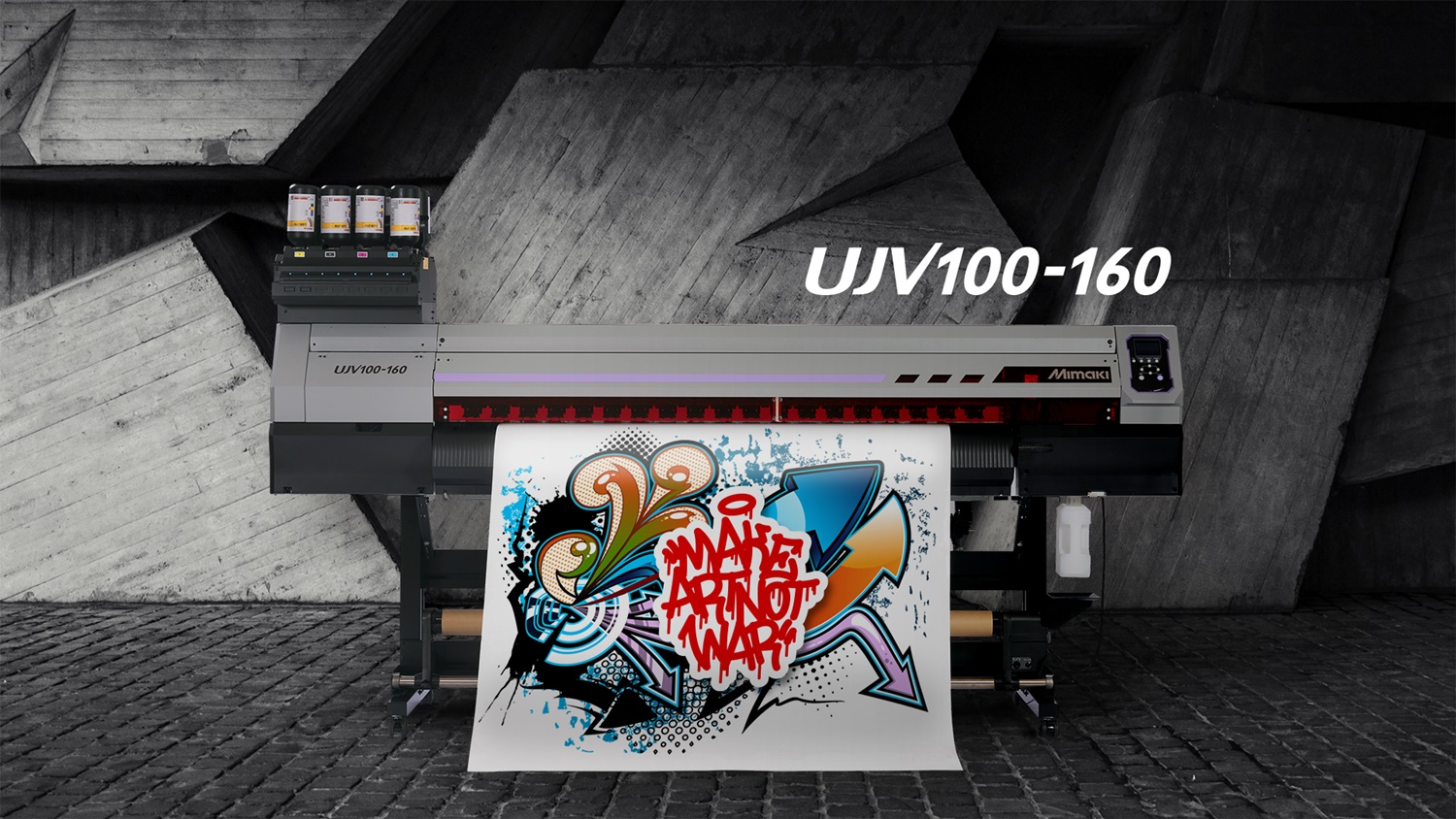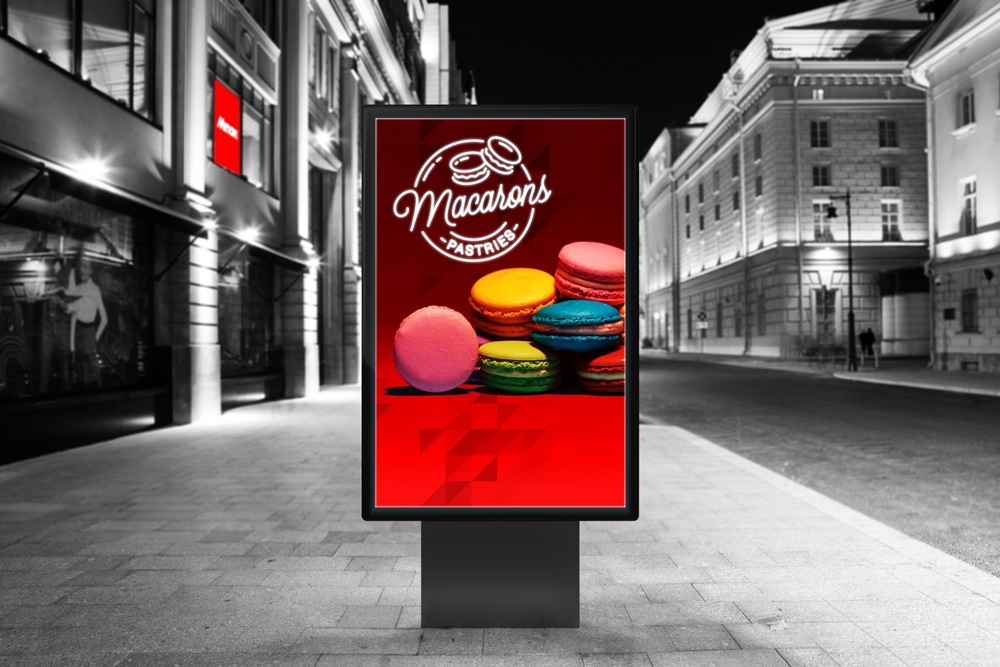P3 1-2/2023 en
UV LED vs Latex
Should you rethink your ink?
Printing Technology

UV-LED technologies, such as the Mimaki UJV100-160, offer a sustainable process while not limiting the diverse range of applications.
Over the last decade, the adoption of digital printing has accelerated and this technology is even becoming a popular option for the future of industrial-scale printing. However, the best type of ink to use in this sector is still debated, and the decision depends largely on the factors you consider. As with any recurring investment, inks are an important factor to look at when investing in a printer or press, especially for large-scale operations. Not only do the recurring costs add up, but so do the CO2 emissions. In order to maximize profits and keep CO2 emissions low, it is important for the printer to create added value, be versatile in its applications and for the ink to be good value to begin with. So, considering UV-LED and Latex printers, which is a more beneficial investment?
UV-LED technologies, such as the Mimaki UJV100-160, offer a sustainable process while not limiting the diverse range of applications.
UV LED or Latex Printing – What is the difference?
Latex inks are water based pigmented inks containing small particles of latex, which is a form of plastic. Once applied to a product, heat is used to evaporate the water, leaving the pigment and latex particles behind. On the other hand, UV-LED inks are not water based, and instead rely on specially designed UV lights following the print heads to dry the substrate.
Weighing up the Benefits:
1. Sustainability
Increasingly, sustainability is becoming an important detail, as European goals1 push industries to reduce CO2 emissions. Both UV-LED and Latex inks have their pros and cons in this area. When we look at the process as a whole, there is a clear sustainable winner. UV-LED inks require up to nine times2 less energy throughout the printing process than Latex inks, due to Latex inks’ water-based composition requiring an additional curing and drying process. Latex printers need to have an accompanying curing heater, and unlike products created with UV-LED ink, cannot be taken to the post-processing machine before being properly dried by a curing heater. This means that the whole process takes much longer, making it more inconvenient, costly and less eco-friendly. Some printing technology manufacturers, such as Mimaki with its JV400LX Series, have created Latex inks that cure at low temperatures to address this issue and minimize energy consumption. However, across the board, UV-LED inks cure instantly with a fraction of the energy needed by Latex, resulting in huge energy savings and up to ten times less CO2 emission than Latex printing.
In terms of safety, both inks are safe to use after curing. Latex inks have the advantage due to its water-based composition, which UV-LED inks compensate for with reduced VOC emissions.
Additionally, all Mimaki's UV-LED and Latex inks are certified ECO GreenGuard Gold. This means that the products are widely acceptable for use, even in environments that require a high level of air quality, such as schools and healthcare facilities. As awareness for climate change grows, migration towards more sustainable production techniques accelerates with it, and will continue to be a major consideration for PSPs moving forward.
2. Cost-Effectiveness
There is a clear stand-out contender here, as UV-LED printers have a lower initial investment and UV-LED inks cost less per liter compared to latex inks. Combined with up to 3 times lower ink consumption compared to Latex, the use of UV-LED printers can make a significant difference in sales margins and profits.
Proving its versatility, UV-LED curing technology does not produce any heat so does not limit the range of materials that can be used. Compared to Latex, which allows the use of only heat-resistant, often expensive materials, UV-LED prints successfully even on the cheapest materials, without the need for a special coating. Luxury and highly profitable glossy or matte applications can also be created with UV-LED transparent inks, specially designed for printing in multi-layer technology, by printing with colour or white inks at the same time.
Reducing wastage is an effective way to both cut down on costs and reduce environmental impact. UV-LED inks are a better choice here as well, as they waste 17% less ink than their Latex counterparts, largely due to less flushing being required during and between print jobs using UV-LED technology.
UV-LED piezo printheads last much longer compared to Latex printheads, which must be replaced after only 1.5 litres of ink have been used. As a comparison, Mimaki's UV piezo printheads are fully covered by a minimum 1-year warranty regardless of the amount of printing volume during the warranty period.
3. Output Quality
Although colour vibrancy is where Latex printing comes out on top, the overall quality and clarity of details such as skin tones and fine print details, as well as colour matching on repeat orders, are undoubtedly on the UV-LED printer side. Unique technologies, such as Mimaki Variable Dot technology, have enabled reduced graininess and harsh tonal jumps, helping to create a realistic photo-quality image.
When it comes to durability, thanks to unique curing technologies, UV-LED inks have superior scratch resistance. Often, UV-LED printed applications, such as floor graphics, can be used immediately after printing without any post-processing, unlike Latex inks which always require lamination for outdoor or frequently scratched applications - further reducing time and additional spend needed to create a final product.
The Conclusion
Ultimately, different PSPs will prioritise different factors when choosing their printer, and depending on the applications they wish to print, their requirements will differ. Latex can create more vibrant colourful applications, and for those printers who only work with a limited number of materials, this could be the one. However, UV-LED technology clearly leads the way in terms of sustainability, cost-effectiveness, flexibility, scratch resistance and quality. With this combination of benefits, UV-LED ultimately delivers a quicker return on investment.
2 According to Mimaki‘s internal evaluation.







